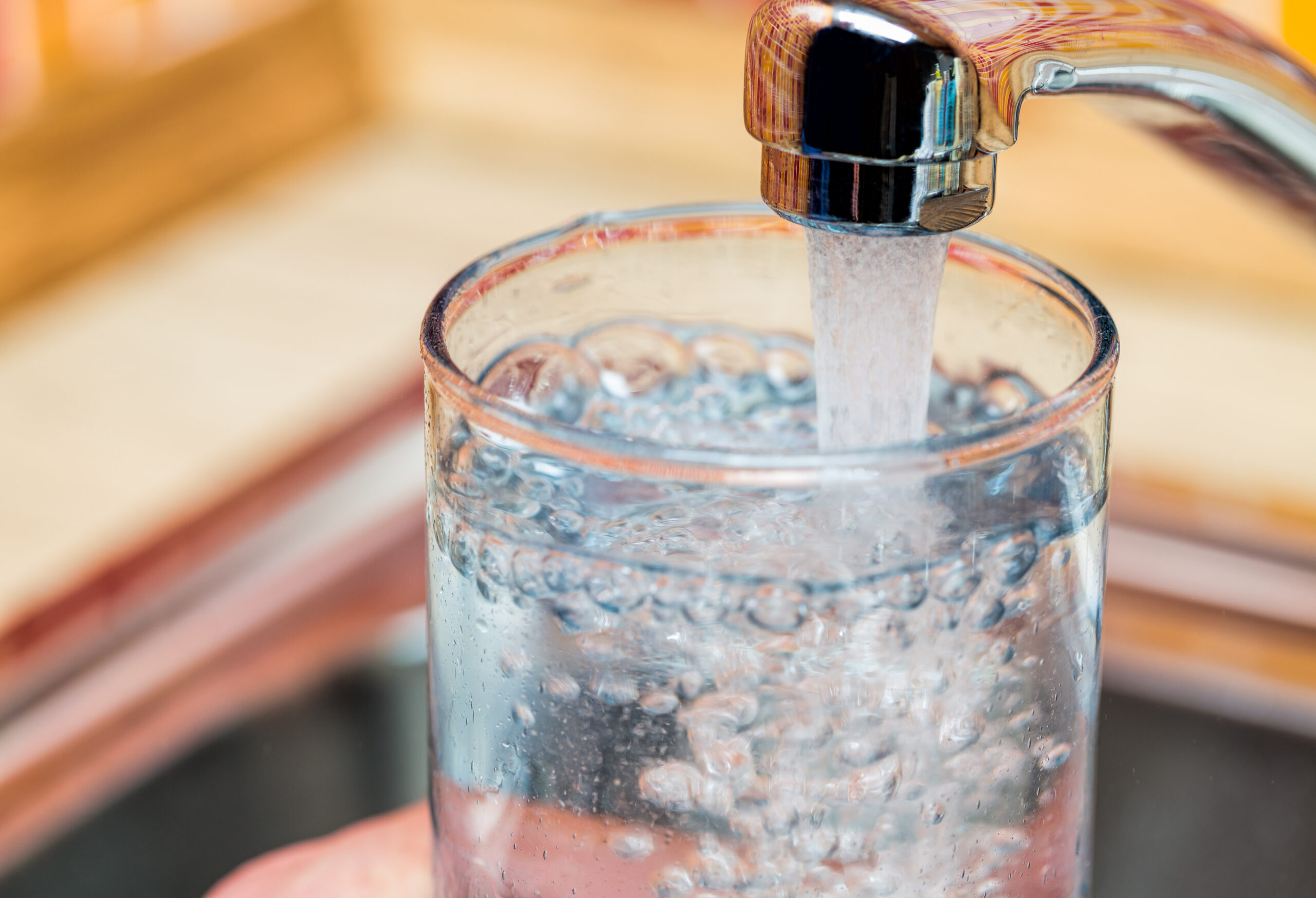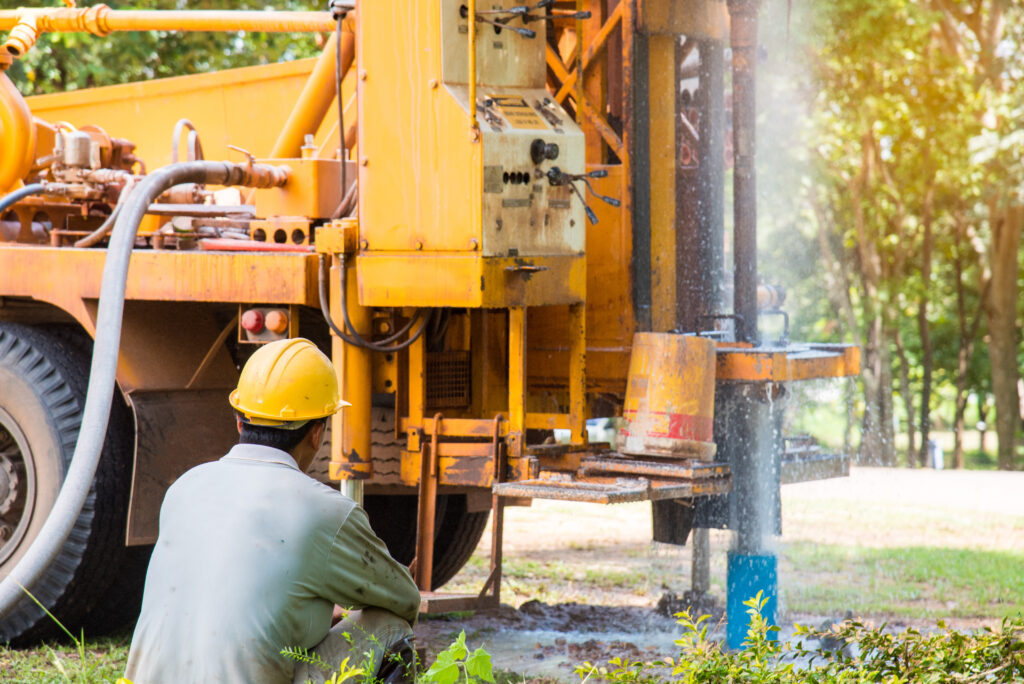Is Well Water Safe to Drink?
Yes, well water can be safe to drink — but not always. Since wells are not regulated or treated by the government, it’s vital that you treat and test your water supply to prevent contamination and possible illness. And even when it is safe for consumption, well water could be harming your health, wellness and home in other ways.
What Is Well Water?

Wells get their water from groundwater found in aquifers, which are underground layers of porous rock saturated with water. The well system pumps water directly into your home, lightly “filtering” the water using a sediment filter or gravel screen to remove particulates.
Because well water is otherwise untreated in its natural state, it can be high in dissolved minerals, metals and other undesirable pollutants that can cause problems throughout the home.
Whether your water comes from a private well or community well, which are common in both rural and some suburban areas, the burden almost always falls on the homeowner to address treatment.
What Affects Well Water Quality: Common Minerals & Contaminants
The makeup of your well water depends on several above and below-ground factors, such as geographic location, well depth and age, soil and aquifer composition, surrounding land use and extreme weather events. With so many opportunities for well water to become contaminated, homeowners and new home buyers need to be aware of what’s actually coming out of their taps!
Which Minerals Are in Well Water?
Common minerals in well water include calcium, magnesium, sodium, copper, sulfur, iron and potassium. In excess, these and other minerals harden your water, staining fixtures like tubs and faucets, while negatively impacting your health — causing eczema, non-cosmetic skin issues and drying out hair. Hard water won’t generally make you sick, but it might have an unpleasant taste or foul odor.
Resolve issues caused by hard water using a water softener system — a popular solution for many homeowners. All Kinetico water softeners are designed to effectively and efficiently remove hard water minerals and metals, safeguarding your health and saving you money long-term on costly home repairs.
What Types of Contaminants Are in Well Water?
From bacteria to pesticides, untreated well water can contain harmful, sometimes toxic contaminants. Some of these will noticeably impact the taste, smell and quality of your water, while others go easily undetected without a water test.
Common well water contaminants include:
- Microorganisms (bacteria, viruses, parasites) – Salmonella, Shigella, Campylobacter, coliforms, E. coli and other bacteria; viruses, such as enterovirus, norovirus, hepatitis A and rotavirus. Parasites (Giardia, Cryptosporidium, Cyclospora, to name a few) are rare but can show up in well water and should be treated immediately.
- Heavy metals – Lead, copper, arsenic, chromium, iron, cadmium and others, depending on your location and surrounding environment.
- Fluoride – Occurs naturally in aquifers and groundwater, with the erosion of rocks and sediment containing fluoride-rich minerals. Fluoride also may leach into wells from industrial runoff.
- Nitrates – Found in chemical fertilizers, animal waste, sewage; also can be naturally occurring.
- Volatile organic compounds (VOCs) – Benzene, formaldehyde, toluene and trichloroethylene; found in both residential and industrial solvents, paints, dyes, degreasers, aerosols and gasoline.
- Pesticides, herbicides and organic chemicals – From lawn care runoff, as well as pharmaceutical production, agriculture, manufacturing and other industries.
- Radioactive elements – Uranium, radium, radon, gross alpha, gross beta.
The sources of these contaminants are widespread, getting into your water through chemical runoff, nearby construction or manufacturing pollution, septic tank leaks, sewage and animal waste leaching, as well as aging water pipes and the natural movement of groundwater.

It is difficult to prevent contaminants from seeping into your well’s water supply. Professional water treatment systems will neutralize harmful pollutants present in your well water.
Potential Health Risks of Drinking Untreated Well Water
Contaminated well water impacts your health differently depending on your immune system, age, level of exposure and the type of contaminant. When in doubt, always seek professional medical advice concerning your health. Below are some of the health risks associated with well water contaminants.
Drinking and even brushing your teeth with water containing microorganisms can make you sick, with symptoms ranging from vomiting and diarrhea to gastrointestinal infections, dizziness and fever.
Heavy metals in your water? Drinking these increases your risks for nervous system and organ damage, autoimmune disorders, cancers and anemia.
Fluoride consumption is often overlooked due to its orthodontic benefits, though drinking water with high fluoride levels can cause skeletal fluorosis and tooth discoloration or pitting. Recent research also has linked excessive fluoride exposure to reduced IQ levels, especially in children.
Nitrates (found in fertilizers and runoff) convert into nitrites when ingested; at high levels, nitrites change the hemoglobin levels in your blood, making oxygen less available throughout the body. This is especially harmful for infants under six months, as nitrites can cause methemoglobinemia — blue baby syndrome — a serious, acute condition resulting in blueness of skin, trouble breathing and even death.
Tap water containing volatile organic compounds (VOCs), pesticides or herbicides, when left untreated, increases your risk of leukemia, lymphoma and other cancers. Not all VOCs are cancer-causing, though they may be toxic to your nervous and hormonal systems, liver and kidneys when exposure occurs at moderate to high levels. VOC exposure means both drinking and bathing in polluted water, as well as inhaling indoor or outdoor contaminated air.
Stop using your well water immediately and seek medical attention if you think your water is contaminated or making you ill.
Signs of Well Water Contamination
If you notice any of the below in your water supply, contact Kinetico to get your water checked and treated.
- Cloudy, opaque water that has visible sediment
- Water with a metallic, soapy, salty, chemical or generally foul taste or odor
- Your water smells or tastes like rotten eggs
- Staining of showers, tubs, sinks, fixtures, dishwashers and clothes (often brownish-red, green or black)
- Scaling buildup on shower heads, around faucets, in pipes
- Soap scum on dishes after running the dishwasher
When Is Well Water Most at Risk for Contamination?
Test your well water immediately if:
- Your government has issued a statement about water contamination, spills or natural disasters in your area
- You recently performed maintenance on your well
- You notice a change in your water’s smell, taste or appearance
- You have unexplained illnesses in your household
- You have highly susceptible family members (e.g., infants, the elderly, people with autoimmune disorders and those pregnant or nursing)
How to Make Your Well Water Safe for Drinking & Household Use
Start by performing an in-depth water test to get a comprehensive understanding of what’s in your well water, and how it should be treated.
Kinetico Advanced Water Systems offers a free water analysis to assess the makeup of your water and perform a detailed risk assessment. Our team can also test for more complex contaminants like pesticides, arsenic and radiologicals using state-of-the-art laboratory equipment. After your water test, we’ll work with you to create a custom water solution to fit your budget, needs and the specifics of your well.
Well Water Filtration Solutions for Homeowners
Installing a water filter, softener and/or purifier will be the best way to ensure your well water is clean and safe for drinking and bathing, as part of the 4+ essentials of total water treatment. Each treatment method is designed to target different types of contaminants, which is why it’s crucial to first test your water and choose the correct, corresponding water system.
Keep your private well clean by getting it sanitized once per year, or sooner if you suspect your water has been contaminated.
If you only need to kill off bacteria and microorganisms, boiling your well water will make it safe to drink, though won’t remove non-biological contaminants. Be sure to boil your water for at least one minute, or three minutes when at altitudes of 5,000 feet or higher, according to the EPA.
Improve Your Well Water With Kinetico Advanced Water Systems
Kinetico Advanced Water Systems is your partner for understanding the makeup of your water and resolving issues. Get started today with a free water analysis for your home’s well.
